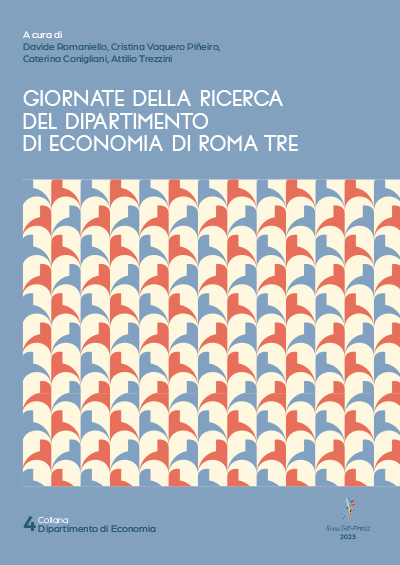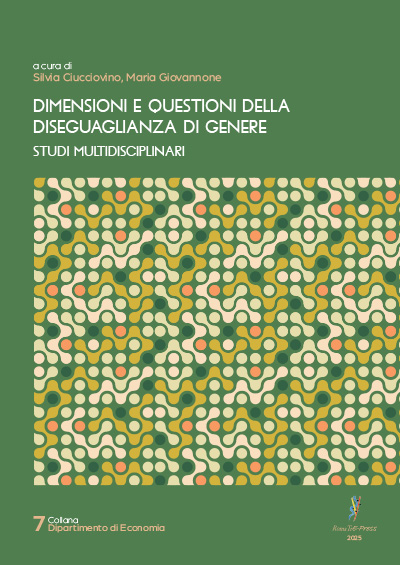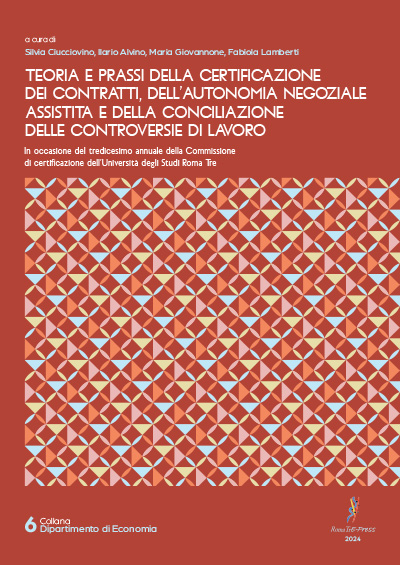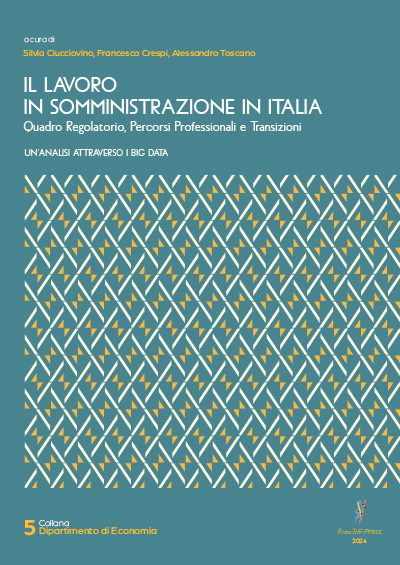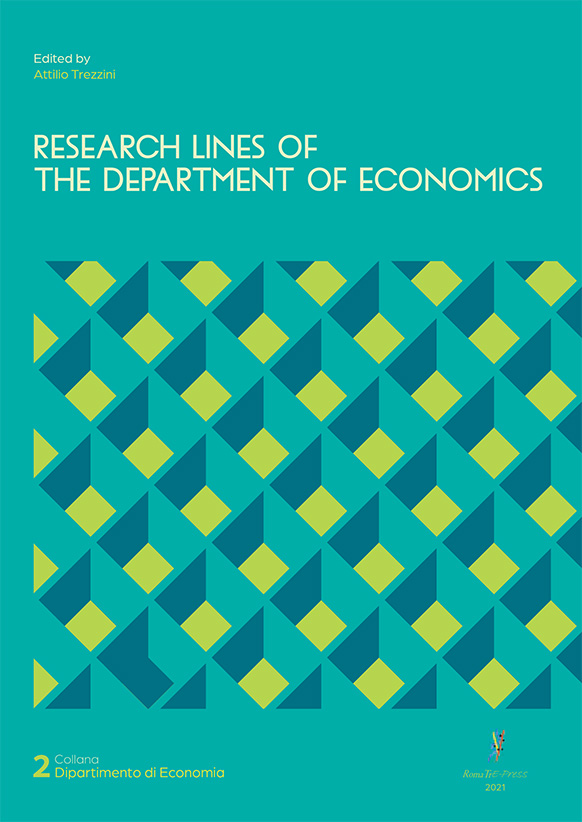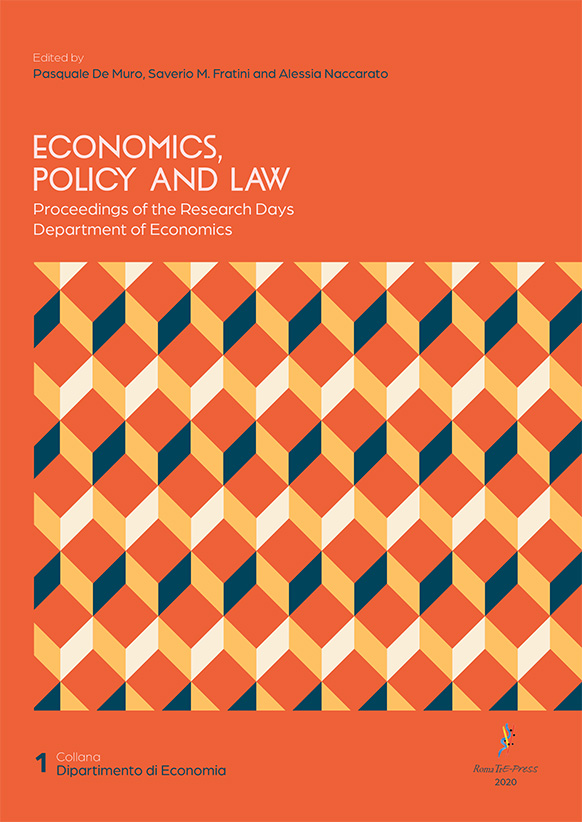Abstract

Il volume raccoglie alcuni dei numerosi contributi che hanno animato le Giornate della Ricerca del Dipartimento di Economia di Roma Tre nell’aprile 2023. I contributi pubblicati, come in generale quelli presentati nelle Giornate della Ricerca, coprono tutte le aeree scientifiche degli afferenti al Dipartimento e tutte le principali linee di ricerca all’interno di esse: la teoria economica e della politica economica, gli studi applicati su temi economici, ricerche nel campo delle materie quantitative collegate allo studio dell’economia e della finanza sia dal punto di vista metodologico che applicato.

This volume collects some of the numerous contributions that animated the Research Days of the Department of Economics of Roma Tre in April 2023. The published contributions, as in general those presented in the Research Days, cover all the scientific areas of the Department's afferents and all the main lines of research within them: economic theory and economic policy, applied studies on economic topics, research in the field of quantitative subjects related to the study of economics and finance both from a methodological and applied point of view.

